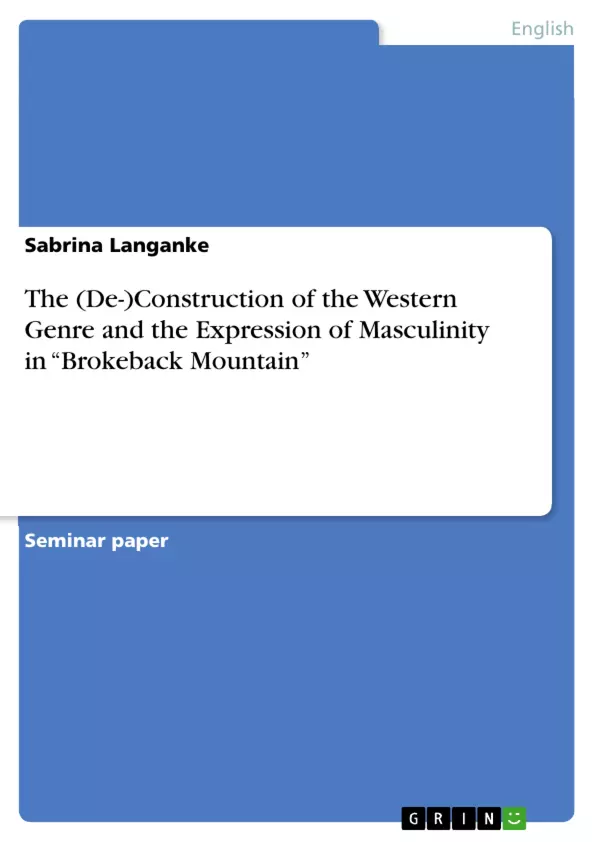The movie "Brokeback Mountain", directed by Ang Lee and published in the year 2005, tells the story of two young men, Ennis del Mar and Jack Twist, who are hired to look after a flock of sheep on 'Brokeback Mountain'. The two discover an intense sexual attraction. But because of social limitations, the two have to maintain their heterosexual facade. Ennis marries Alma and Jack marries Lureen. However, over a period of twenty years, Ennis and Jack contrive to meet periodically for trips to 'Brokeback Mountain'. "Brokeback Mountain" is often depicted as the first gay cowboy movie or gay western movie.
In this term paper we firstly constitute the historical background of "Brokeback Mountain". For the recapitulation of the GLTB history we will use the book Queer America. A GLBT History of the 20th century by Vicki Eaklor which is interesting as it precisely describes how queer activism developed from 1890 to 2005.
Table of Contents
- Introduction
- Historical Context (GLTB Activism in the 1960s to 1980s)
- Brokeback Mountain
- (De) construction of the Western Genre
- Depiction of Homosexuality and Expression of Masculinity
- Conclusion
Objectives and Key Themes
This term paper analyzes the movie Brokeback Mountain, examining its historical context within the GLTB movement of the 1960s to 1980s, its deconstruction of the Western genre, and its portrayal of homosexuality and masculine expression.
- The historical context of GLTB activism in the 1960s to 1980s
- The (de)construction of the Western genre in Brokeback Mountain
- The depiction of homosexuality in the film
- The expression of masculinity in relation to homosexuality
- The significance of Brokeback Mountain as a gay cowboy movie
Chapter Summaries
- Introduction: The introduction provides an overview of the movie Brokeback Mountain, highlighting its depiction of a forbidden love story between two cowboys. It establishes the film's significance as a potential first gay cowboy movie and outlines the paper's structure, which includes a historical context analysis, an examination of the Western genre, and a discussion of the film's depiction of homosexuality and masculinity.
- Historical Context (GLTB Activism in the 1960s to 1980s): This chapter explores the historical background of the GLTB movement during the period in which Brokeback Mountain is set. It examines the rise of homophile organizations, the significance of the Stonewall Riots, and the emergence of queer theory.
- Brokeback Mountain (De) construction of the Western Genre: This chapter delves into the Western genre and its representation in Brokeback Mountain. It analyzes whether the film adheres to the conventions of the traditional Western or deconstructs them. The chapter will discuss the definition of the Western genre and explore different perspectives on the genre's portrayal in the movie.
- Brokeback Mountain Depiction of Homosexuality and Expression of Masculinity: This chapter examines the film's depiction of homosexuality and its relationship to masculine expression. It analyzes the protagonists' portrayal of masculinity and the film's depiction of their sexuality, exploring key scenes that contribute to their overall representation.
Keywords
This term paper examines the movie Brokeback Mountain, focusing on its historical context within the GLTB movement, its deconstruction of the Western genre, and its portrayal of homosexuality and masculine expression. Key terms include: GLTB Activism, homophile organizations, Stonewall Riots, queer theory, Western genre, masculinity, homosexuality, and the representation of cowboys in film.
- Quote paper
- Sabrina Langanke (Author), 2013, The (De-)Construction of the Western Genre and the Expression of Masculinity in “Brokeback Mountain”, Munich, GRIN Verlag, https://www.grin.com/document/308301



